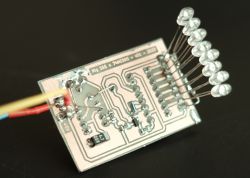
Today`s mini-project is perfect as training material for young electronics students.
Before Christmas, I was asked to make a simple Christmas tree decoration. Among many possibilities, I chose the floating light effect. It can be observed in "ignicle lights" on Christmas trees at Christmas fairs, in new luxury cars (floating indicators), or in the form of light floating in a circle (an interesting application is e.g. a bicycle rear light). It should be noted that this is not a shining running point, but a gradually lit line of light, which in the second phase gradually goes out, giving the effect of a wider moving light.
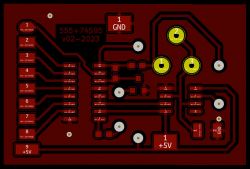
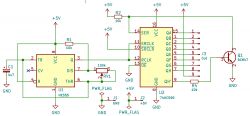
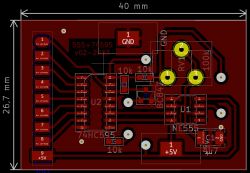
In this mini-project, I present a scheme proven in practice (there are usually various "interesting" errors on the Internet - I have been trying to combat this thoughtless practice for years), a single-sided PCB (in SMD technology) and the arrangement of elements. In my case, I power the system with a single Li-Ion 18650 cell with an attached charge/discharge control module (of course, the diagram does not take this into account, I use a known module with a nominal value of PLN 1-2).
As you can see, there are no LEDs on the PCB, I made this glowing ring (in my case) in a three-dimensional form, using an idea from YT (just enter the phrase "74HC595 LED chaser"). On the PCB we have 8 outputs for cathodes and plus power supply for a common anode (in my case it is in the form of a circle made of thicker copper wire). When powered by one Li-Ion cell, LED resistors are unnecessary. It is worth adding that we can divide such a circle into 2 or 4 parts and solder 8 LEDs in each section. The potentiometer (peer) is used to change the speed of the effect.
By the way, here`s a tip to help you make a nice circle with LEDs. First, we draw a circle, divide it into 8, 16 or 32 parts and mark the points for drilling 5mm holes. Then we stick our sketch on a piece of board, drill for a few minutes and we have a perfect template. Such help allows you to make many copies of the system in a repeatable way.
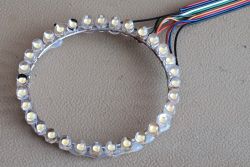
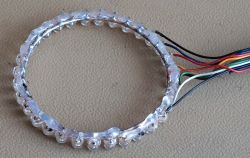
Here you can see the first, prototype version of THT (I still had to make a few minor corrections here, as can be seen in the title photo). This is basically the finished "floating turn signal":


A short video showing the achieved lighting effect:
I recommend it to everyone learning the difficult art of soldering, such a system does not require complicated startup and should bring satisfaction
Cool? Ranking DIY





